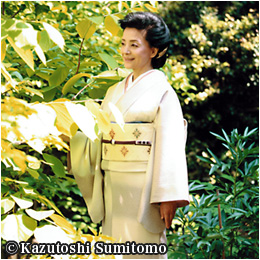Does the Recent Supreme Court Decision on Inheritance for Illegitimate Children Suit Japanese Society?
In a controversial decision on September 4th, Japan’s Supreme Court declared unconstitutional a civil code provision denying full inheritance to children born out of wedlock. The court ruled that the provision violates the equality guaranteed under the basic law as it entitles illegitimate children to only half as much as their legitimate siblings.
It clearly is a decision that is expected to significantly affect the traditional Japanese way of life and Japanese society itself. The Supreme Court cites several factors for its decision, including ① a change in the nation’s perception of the issue, ② recommendations from the international community, and ③ the arbitrary nature of halving inheritance for illegitimate children.
As for factor ①, there certainly has been a gradual change in the nation’s perception of this matter. For instance, a 1979 public opinion survey conducted by the Prime Minister’s Office showed 47.8% of respondents to be against all siblings, legitimate or not, being entitled to equal inheritance, and 15.6% for it.
Clearly, national sentiment was overwhelmingly against such an arrangement then. How about now? In a similar survey in 2012, 35.6% were against uniform inheritance while 25.8% were for it, indicating that opposition still remains strong today. Incidentally, 38.6% of respondents replied either they could not make a choice between the two, or they did not know how to answer.
As the figures show, the nation’s perception has been changing gradually, but those opposed to a revision of the on-going provision still remain in the majority. Therefore, the Supreme Court’s explanation that a change in the nation’s perception constitutes a major reason for the unconstitutionality ruling contradicts the actual situation.
What about factor ② then — the so-called recommendations from the international community?
In European nations, legal revisions were already carried out in the 1960s entitling all siblings to uniform inheritance. In 1969, ten years prior to the afore-mentioned Japanese survey, similar revisions were implemented in (West) Germany, Sweden, and Britain. Later, France and the US followed suit.
Behind such a move lay social conditions that forced these revisions. There simply are too many illegitimate children in these nations. In France, for instance, their number has surpassed that of legitimate children — a stunning 56% of all of French children are born out of wedlock today. The numbers are 47% for Britain, 41% for the US, and 34% for Germany.
That more than, or nearly, half of all children in these nations are illegitimate obviously reflects significant changes to the institution of marriage itself, as well as the husband-wife relationship. It clearly shows that values attaching importance to legal marriage, and honoring various social conventions based on it, are on the decline. In that case, the past measure to institutionally differentiate between legitimate children and illegitimate children quite naturally has outlived its usefulness.
Legacy Lasting More Than a Dozen Centuries
However, Japanese society is fundamentally different from American or European societies in terms of how illegitimate children are viewed. In Japan, illegitimate children now account for just 2.2% of all children born. It is quite natural that relationships between men and women, husband and wife, parents and children, and among family members, vary from nation to nation — and from culture to culture. I regard these elements as an important legacy for us to consciously safeguard. It certainly is not a question of whether or not one set of standards is better than another. It simply means that fundamental societal differences do exist among nations, and that we need to realistically come to terms with them. And yet, by rendering this decision, the Supreme Court has taken a step toward calling on the nation to accept at face value American and European rules despite the huge societal differences mentioned above.
What would be the reaction if we are to switch positions and propose to the US and European nations that they follow the Japanese practice, which treasures and protects traditional marriage? I am certain there would be strong calls for Japan to not interfere with their internal affairs.
There will be those who say it is a matter of discrimination, that the system now in place in Japan discriminates against illegitimate children and should therefore be replaced with the policies in place in the US and Europe. Let’s ponder this point in tandem with factor ③ that the Supreme Court cites.
First, let us consider the issue of arbitrariness cited by the Supreme Court in determining the 1 to 1/2 inheritance ratio. In point of fact, our predecessors gave much thought to this matter.
Dr. Toru Arichi (1928-2006), former Emeritus Professor of law at the Sacred Heart Women’s College in Tokyo, noted that the old civil code, enacted in 1898, had determined the inheritance ratio for legitimate and illegitimate children to be 1 to 1/2 on the basis of the Taiho Code, an administrative reorganization nearly 13 centuries ago, at the end of the Asuka period (592-710). (For more detail, please refer to “Force of Inheritance,” of the New Edition: Annotated Japanese Civil Code 27 [fifth compilation], Chapter 3, edited by Tomohei Taniguchi and Takahiko Kuki [Yuhikaku, Tokyo: 1989].) I was immensely surprised and touched that our values reflect such a long legacy. And yet, it is only natural that our civil code, which has continued to regulate our way of life for more than a dozen centuries, reflects the way we contemporary Japanese live our lives.
Dr. Nobushige Hozumi (1850-1926), who served as a member of the drafting committee of the old civil code, had this to say about why the centuries-old regulation was retained by the Meiji government: “After all, the law views legitimate marriage as of great import…therefore, (our forefathers considered it) only natural to differentiate the amount of inheritance between legitimate children and illegitimate children.”
In point of fact, the ratio of inheritance for illegitimate children was not arbitrarily determined to be half of what their legitimate siblings were entitled to. Rather, the adopted measure reflected the state of affairs of Japan as a nation that values legal marriage, with a tacit understanding among its people that, because the matter involved intricate human sentiments, problems pertaining to inheritance by illegitimate children should be resolved sensibly by resorting to the good sense of the parties concerned.
What is interesting about the debate that occurred at the time was that there existed considerable opposition to sharing any inheritance with illegitimate siblings.
The opposition camp argued that “recognizing illegitimate children’s right to a share of inheritance in itself, even half of their legitimate siblings, runs counter to the spirit of the current constitution, which advocates legal marriage.”
Despite such differences, the centuries-old practice of honoring the 1 to 1/2 ratio was eventually incorporated into the current civil code, which was enacted 105 years ago taking into consideration the wishes of both camps.
Role in Determining the Direction of the Nation
On the other side of this debate, people assert that “all children are equal,” “children are not to blame,” and “children cannot choose their parent.” That’s right. No child should be discriminated against, regardless of his background. There is nobody who does not want all children to grow up happily. That is why Japanese society has made such an effort to care for children’s wellbeing. For instance, a reference in the family register that traditionally differentiated illegitimate children from their legitimate siblings has been eliminated, while more and more Japanese corporations are inclined to shy away from compiling reports on family background of new recruits, fearful of being accused of engaging in discriminatory acts. Japanese society as a whole has without doubt been moving in the direction of eliminating discriminatory practices.
Against such a background came the recent unconstitutionality ruling. I am fully for the idea of eliminating discrimination, but what makes me quite uncomfortable is a suspicion that the Supreme Court, in its zeal to focus on the discrimination and sorrow that illegitimate children have been subject to, may have overlooked the often complex emotions that legitimate siblings and their mothers must also deal with.
As regards the court decision, a family of legitimate children from Wakayama Prefecture in one of two inheritance disputes in question published a statement which said: “We find the decision hardly agreeable to us…it is extremely regrettable and unacceptable…The Supreme Court has failed to come to grips with the reality of Japanese family structure and social conditions.”
In this lawsuit, the legitimate children and their mother –– the wife of their deceased father — must feel deep isolation, sorrow, and anger to the same extent as the illegitimate children and their mother suffer from a sense of discrimination and alienation.
At the same time that the judiciary must listen carefully to the arguments of
both sides in a dispute in order to render a fair and impartial judgment, it must also bear in mind that its judgment will affect the overall policies and direction of the nation. In this regards, it must attach the same importance to claims by legitimate children and their mothers as it does to those of illegitimate children and their mothers. Japanese society functions on the basis of family ties, and I believe it is the judiciary first and foremost that bears the responsibility of striving to further solidify this precious foundation.
Under no circumstances should the judiciary neglect efforts to eliminate
discrimination against illegitimate children and their mothers. At the same time, it must safeguard legal marriage, which constitutes the foundation of Japanese society, as well as the rights of legitimate children and their mothers.
(Translated from “Renaissance Japan” column no. 574 in the September 12, 2013 issue of The Weekly Shincho)








